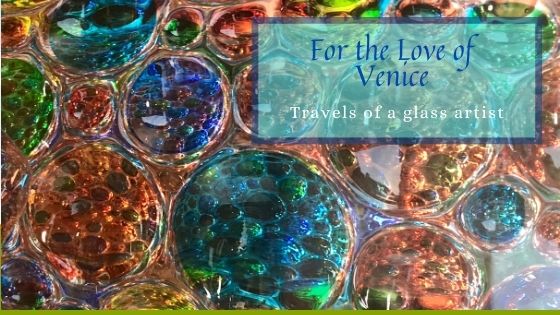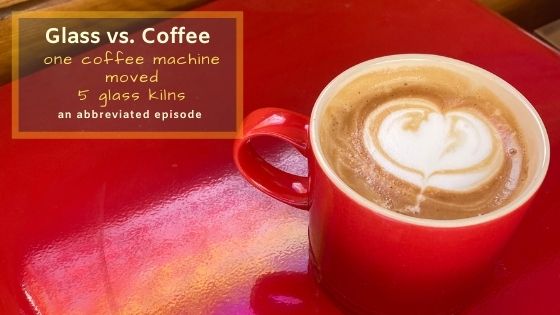Glass Alchemy - the magic is in the chemistry (Part 1)

There is no doubt glass is a magical medium. The mere thought that it is mostly sand transformed by heat into a substance that projects coloured light is in itself an idea rich with possibility. But behind the wonder and inspiration lies plenty of science and a good dollop of alchemy.
I have often explained to clients to think of glass as cake. Each taste and texture variety has its own recipe to make it what it is. An almond dacquoise sponge is very different from a chocolate mud cake and likewise is the glass of say a Murano glass vase very different from Tiffany mottled stained glass. It boils down to ingredients and ratios and of course technique. Each glass type and glass colour has its own list of components to make it what it is. Just like baking, it is in the chemistry of ingredients that produce a new substance with the potential to delight. These recipes are more often than not also guarded and secret, sometimes even to the grave.
Dating from the earliest times around 2000BC, Mesopotamian recipe tablets that survive to this day, resemble medical instructions and even invocations, prayers and propitious days for making glass. The ability to transform a combination of silica sand, an alkali and metal oxides into a rich variety of coloured and transparent materials was the beginning of chemical magic, the basis of physical transmutation. Often the glass received the same status as gemstones referred to as 'stones from the kiln' as opposed the 'stones from the mountain', but both revered similarly. The admiration was not only in the object itself, but also in the craftsmanship and the person being able to make it.[i]
Further Mesopotamian texts indicated that glass as 'molten stone' was viewed as a natural material, same as metals that could be melted and worked. Being viewed as stone, the distinction between colours was named in the same way we name coloured mineral stones today and each colour of glass had a distinct name. Some glass colours today still contain reference to the mineral giving them their unique colour such as Gold Purple and Aventurine Blue, but whether it is in the name or not, all glass contains mineral components and even metals to ensure their colour. Copper-bearing glass are often in the blue and green ranges while lead and gold can be found in some red, purples and pinks. These two groups of coloured glass will have chemical reactions when fused or melted with glass that contain sulphur and/or selenium causing colour changes.
In Egypt the gods were closely related to certain minerals and thus the craftsmen melting these minerals to create 'stones from the kiln' were high is social ranking. Egyptian Blue became not only the well-known colour of today, but its name was reference to Lapis Lazuli that the blue glass was imitating. Often the hair of the gods were rendered in this colour, paving the way for this colour's religious meaning.

Fused glass from Egypt at the Corning Museum of Glass (Photo: Helga Stassen)
The Egyptian glassmakers developed their chemical arts by adding various metal oxides to the silica and went on to imitate other precious stones such as emerald, ruby, topaz and of course crystal. The chemical 'magic' and transformation in colour that occurred in these natural minerals when heated to create the coloured glass was the beginning of the theory of matter and also transmutation, the essence of alchemy.
In Roman times, Emperor Constantine issued a promulgation that exempted the glass artists of public service in order to dedicate their time to develop their craft, along with architects and mathematicians and mosaic artists that were in glass-related industries. Among all the glass riches produced in these times, they developed mirrors, not only for vanity sake, but even as weaponry and for spiritual usage. Constantinople, now Istanbul, gave us a spectacular display of golden glass alchemy in the mosaic vaults of the Hagia Sophia. This knowledge eventually came back to mainland Italy where it adorned many vaults, from Ravenna to most notably, the San Marco basilica in Venice.
Golden mosaic vaults at San Marco Basilica, Venice (Photo: Helga Stassen)
Between the 6th and 9th centuries AD, recipes and techniques to make coloured glass were exchanged with plenty of experimentation but with the fall of the Roman Empire the supply of certain ingredients such as soda ran dry and most of the knowledge disappeared too.
In the 12th century a new era of glass was born - stained glass. Glass was once again playing an important role in the metaphysical aspects of society and the glass masters that worked hand in hand with goldsmiths to create sacred treasures, were highly regarded. The end-results of the glass work of these times are often what draws the crowds to the buildings that contain them to this day, some 800 years later. A more secret aspect of glass was also studied during this era. The scientific alchemists of the time followed the glass masters closely studying the material that imitated sapphire and emerald and that according the Catalan alchemist Sadacer glass was "a transparent body, artificially brought to the nature of quintessence."[ii] Quintessence was used to describe the mystical fifth element, a pure substance that is the carrier of light. Seems like a very apt definition of glass!
In the later 14th and 15 centuries when the Venetian glass tradition and Murano glass masters were now famous, even Leonardo da Vinci acknowledged the relationship between glassmaking and alchemy where simple products of nature are used to create something that Nature cannot produce herself. A friend of da Vinci, fellow Florentine Vannoccio Biringuccio wrote a treatise after studying the furnaces and techniques in Murano and wrote "I shall speak to you of glass, not as a proper semi-mineral, nor yet as a metal, but as a fusible material that is almost made mineral by art and by the power and virtue of fire, born from speculation of good alchemistic savants [buoni ingegni alchimici], through whose efforts it imitates the metals on the one hand and the transparency and splendour of gems on the other [. . .] Certainly, in this art surpasses Nature; for although she has produced crystal and all the other kinds of gems that are much more beautiful of than this, no way has yet been found for working with these as is done with glass.”[iii]
As the epicentre of power, culture and science moved from Venice to Florence to France, so did the studies and treatises. The de Medici’s had a great interest in alchemical sciences and even erected a great laboratory where glass played a central role. One of the people employed here was the greatest of Renaissance glass researchers, bringing together approximately two millennia of glass secrets, recipes and techniques, Antonio Neri. He travelled to the Netherlands, Germany, studied glassmaking in Murano, Venice and in 1612 published his comprehensive book L’arte Vetraria. [iv] This was the first published book on glass containing precious information that was translated and spread in Europe, continuing not only the chemical science of glass production but also using this art form to find the key to unlock the transmutation of matter.
Part 2 to follow.
This blog has been guided by the article 'The Alchemy of Glass Counterfeit, Imitation, and Transmutation in Ancient Glassmaking Marco Beretta Science History Publications/usa a division of Watson Publishing International llc Sagamore Beach 2009
[i] Mary Luella Trowbridge, Philological Studies in Ancient Glass (Urbana: University of Illinois, 1930), p. 19.
[ii] “Corpus diaphanum artificialiter ad naturam quinte essencie redactum.” Pascale Barthélemy (ed.), La Sedacina ou l’Oeuvre au crible. L’alchimie de Guillaume Sedacer, carme catalan de la fin du XIVe siècle, 2 vols. (Milan: Arché, 2002), vol. 2, p. 164.
[iii] Vanoccio Biringuccio, The Pirotechnia of Vannoccio Biringuccio. Translated from the Italian with an introduction and notes by Cyril Stanley Smith & Martha Teach Gnudi (New York: American Institute of Mining and Metallurgical Engineers, 1959), pp. 126–127
[iv] On Antonio de’ Medici, Antonio Neri, alchemy and glassmaking see the welldocumented introduction by Ferdinando Abbri to Antonio Neri, L’arte vetraria. Introduzione e cura di Ferdinando Abbri (Florence: Giunti, 2001), pp. 5–23. Paul Engle has recently published the illustrations (with plenty of glassware) of an alchemical treatise which Neri was preparing in 1598–99; Paul Engle, “Depicting Alchemy: Illustrations from Antonio Neri’s 1599 Manuscript,” in Dedo von Kerssenbrock-Krosigk (ed.), Glass of the Alchemists: Lead Crystal-Gold Ruby, 1650–1750 (Corning, N.Y.: Corning Museum of Glass, 2008), pp. 48–61.
Leave a comment
Comments will be approved before showing up.
Also in For the Love of Glass

For the Love of Venice

Glass vs Coffee

